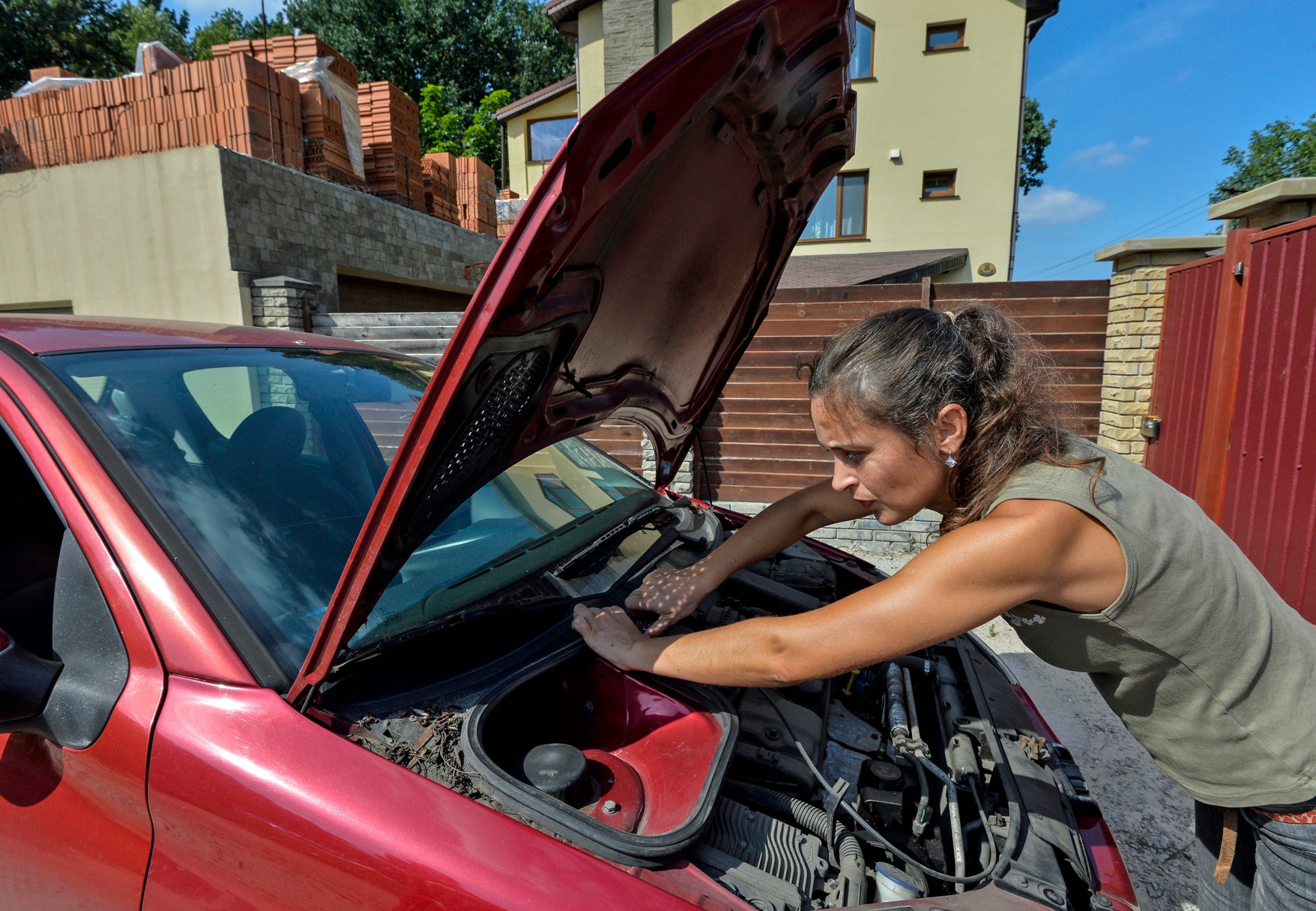- Letting a car sit while under coronavirus lockdown – or any other time – can potentially cause hefty repair bills, but you can keep your vehicle in good condition by following a few key steps.
- The main concern with letting a car sit in the short term is a dead battery – the best way to prevent that is to drive your car at least once every two weeks.
- Driving regularly also prevents your tires from degrading, and it keeps all the moving parts in your car lubricated.
- Getting your car moving at regular intervals helps in the short term, but some additional precautions may be in order if you’ll be driving rarely for an extended period of time.
- Visit Business Insider’s homepage for more stories.
Given the fact that there’s a pandemic going on, you’d be forgiven if car maintenance isn’t top of mind these days. However, since most of the US is on some form of lockdown – and most people’s daily drivers are sitting for longer than usual – proper vehicle upkeep is far more important than it might seem.
One of the best ways to curb the spread of the novel coronavirus is, of course, to stay at home and practice proper social distancing. But the longer your car sits, the more risk there is of causing permanent damage or an unwelcome repair bill. Fortunately, drivers can take a few simple steps to ensure their car stays in good running condition over the next weeks and months of coronavirus quarantine.
Business Insider spoke with experts to learn what drivers should watch out for when parking their cars for longer than usual – but, keep in mind, there’s a whole host of additional precautions to take if you’re planning to tuck a car away in long-term storage.
Larry Kosilla, the founder of car detailing company Ammo NYC, Ronald Montoya, senior consumer advice editor at Edmunds, and Rich White, executive director of the Car Care Council, a nonprofit that educates drivers on automotive maintenance, all shared some tips and tricks for keeping a sitting car well maintained in the near term and in the long haul.
Here's what they had to say:
1. Keep the battery charged by driving your car once per week
Car batteries discharge over time, and the easiest way to prevent a dead battery is to drive your car at regular intervals.
But there's no one-size-fits-all answer to the question of how often to take your vehicle for a spin. Kosilla said it instead depends heavily on the age of your car, the condition of your battery, your local climate, and whether you're parked indoors or outdoors.
For instance, a garaged, new car - with a brand-new battery, presumably - will fare better than an older car parked on the street. Keep in mind that batteries tend to drain faster in colder climates.
All the experts Business Insider spoke with recommended starting a car once per week to prevent a dead battery. While idling your car may be better than nothing, actually driving your car is the best way to recharge a battery in a timely manner, even if it's just around the block a few times.
2. Do the same to keep your car's moving parts lubricated
Driving a vehicle regularly not only keeps the battery charged, but also prevents the engine and other mechanicals from drying out. If a car sits for too long, oil starts to settle, fluids begin to separate, and seals can begin to dry out, which, according to Montoya, can cause damage to your vehicle.
Taking your car out for a brief drive helps to keep fluids circulating and ensures all the moving parts - the transmission, brakes, and so on - stay well lubricated. That's one major reason that going out for a drive is superior to simply idling your car in the driveway.
As for how often to drive your vehicle, Kosilla said once a week "is amazing, but once every two weeks is totally fine."
"When you get into three or four weeks [without driving], there's a whole host of things that can go wrong," Kosilla added.
3. Driving also helps you avoid flat spots
Tires lose pressure over time, and if a car sits for too long, the weight of the vehicle can cause flat spots to develop where the rubber meets the road. Tires with flat spots may need to be tossed out and swapped for new ones, so car owners should do what they can to avoid that headache.
Fortunately, a weekly driving schedule to keep your battery charged and components moving should also help avoid potential flat spots.
4. Consider using a trickle charger
A trickle charger - a device that plugs into a standard wall socket and attaches to a car battery's terminals - is a great option for keeping a vehicle's battery charged if it can't be driven regularly, Kosilla and Montoya said. Batteries tend to drain especially quickly in high-end sports cars like Porsches, Kosilla added, making a trickle charger an important investment anyway.
Keeping your battery charged and your car moving regularly are the most important measures to take if you're driving infrequently in the near term. However, if you want to be extra careful, or you anticipate that you'll be driving rarely for an extended period of time - perhaps several weeks or months - consider following these additional steps:
5. Choose your parking spot wisely
Parking long term on a soft, permeable surface like grass or dirt allows moisture to travel up into your car's undercarriage, causing rust. Finding a spot on pavement is ideal, but gravel is still a decent second choice, Kosilla said.
Montoya suggests owners heed signage, park in a safe area, and avoid leaving valuable items in their vehicle for long periods of time.
6. Be mindful of what you park beneath
"If you park under the wrong tree, you're screwed," Kosilla said. According to Kosilla, parking under a tree that drips sap can be "an absolute crazy nightmare" for a car's paint job - especially if the paint is hot, which makes it softer and more prone to damage.
Likewise, Kosilla said, "bird poop is an absolute disaster" and can damage a car's paint within hours.
"It's like pouring acid on a car," Kosilla said.
So, if at all possible, avoid stashing your car under sap-prone trees or in places where birds are known to congregate.
7. Top off your tank
The benefits of filling up on gas before parking long term are twofold. White and Montoya said topping off prevents condensation from accumulating inside the tank, and and Kosilla mentioned that it also stops gasoline fumes from building up to hazardous levels.
Although it's probably overkill, you can use fuel stabilizer to extend the life of your gasoline and prevent it from degrading over time, White said.
Not to mention, gas is cheap right now, and a full tank may offer peace of mind in uncertain times - just remember to sanitize your hands after touching the gas pump, since it can be extremely dirty.
8. Don't use the parking brake
Leaving the parking brake on for an extended period of time can cause the brake pads and rotor to stick or fuse together. More often than not, Kosilla said, this isn't a big issue, but it's something to be avoided.
Moisture is what causes the parking brake to stick, so avoid engaging it if it just rained, Montoya said.
9. Consider using a car cover
A cover can protect your paint from the elements, so long as you clean your car thoroughly before putting it on. Kosilla said putting a cover on a dirty car can do more harm than good, since the cover can rub and abrade your paint over time.
10. Wax and seal to protect your paint
If you want to go the extra mile in protecting your paint, wax and seal your car before putting it away. That'll prolong the longevity of the paint, even in the face of dust, twigs, and other contaminants.
If you're not going to spring for a car cover, Kosilla said waxing and sealing is the next best thing.
"If you're not going to put a windbreaker on it, at least put on an undershirt," Kosilla said.
10. Be wary of rodents that may take up residence in your vehicle
Depending on where you live, your car may become a rodent motel if it sits neglected for too long. Multiple experts Business Insider spoke to say to put rodent repellent in your garage and clean your car of any food scraps to prevent unwanted visitors.
12. Keep up your normal maintenance schedule
"Even though most people are driving less these days, they should still try to keep up a preventative maintenance schedule," White said.
White also said to continue changing oil at the proper time intervals and to regularly check your car's brakes.
13. Once you start driving more frequently, give your car a visual once-over
After driving your car every so often for months, it's a good idea to briefly inspect your vehicle to make sure it's still roadworthy. Check the tire pressure, oil and coolant levels, and go easy on the brakes on your first couple of drives.
It's common sense, Kosilla said, but: "Don't start it up and do 100 miles per hour. Ease into it."

